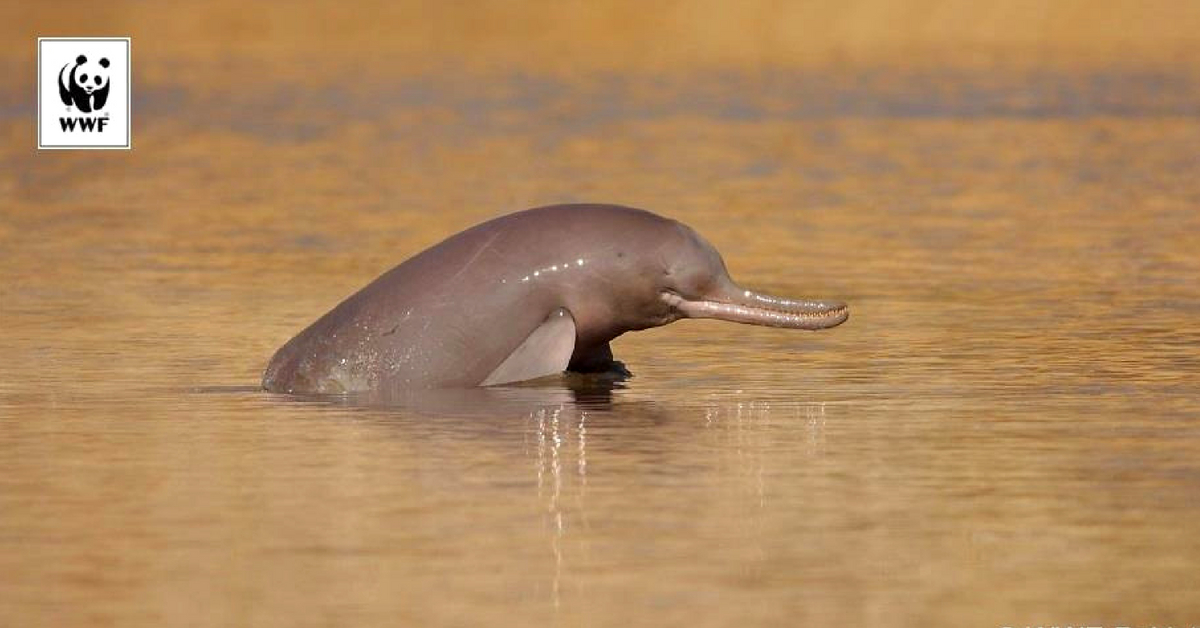Who doesn’t like dolphins? The aquatic mammals are arguably one of the most beautiful, compassionate and smartest beings in the ocean. In fact, there have been several instances when they have rescued humans, helped them fish and protected them from the harms of the sea.
You have most likely seen pictures of dolphins diving out of the water, their beautiful grey coats glistening in the perfect light. These marine mammals are the perfect sight to behold on a cruise or a boat ride and are usually thought of as ocean creatures. But did you know that some dolphin species also live in Indian rivers?
Freshwater species like the Ganges river dolphin and Indus dolphins reside in India in the Ganga and Beas rivers, respectively, and the Indus river dolphin (Platanista gangetica minor) is a rare aquatic mammal found only in India and Pakistan!
This sub-species of the South Asian river dolphin is a pretty unique and interesting mammal.
Indus river dolphins sleep in intervals of 4-60 seconds at a time to avoid bumping into things in the murky water. pic.twitter.com/m15hEWFR8d
— Weird Science (@weird_sci) May 20, 2017
It was the first discovered side-swimming cetacean and is functionally blind, which is why it is also known as the Indus blind dolphin. It navigates and hunts its prey using a biological sonar for echolocation.
In India, this dolphin used to be found in the major tributaries of the Indus river but is now found only found in the Beas river in Punjab. Recently, Punjab’s wildlife wing, in association with the World Wildlife Fund (WWF), India conducted their first ever Indus Dolphin census and the numbers are reassuring.
“Based on the direct counts, after correcting for dolphins that were missed by the survey, the final estimate of the population of Indus river dolphins in the Beas River stands at 5-11,” says a report by the WWF India.

The number seems too less to be happy about. However, WWF clears this misunderstanding, saying “Although the population of the species is small, its presence in the Beas river above the Harike barrage (situated at the confluence of Beas and Sutlej) for 70 years, indicates no decline in the population of the species.”
In fact, an adult female, a week-old calf, and a sub-adult were among the first few dolphins sighted. Just 8 kilometres downstream from this first sighting was another female with a sub-adult and a week-old calf. This shows that Beas river has been a healthy breeding ground for the Indus dolphins.
You may also like: Special Sighting: ‘Bagheera’ Spotted in Chhattisgarh After 24 Years!
The survey by Punjab government and WWF India was conducted across a 185km stretch of the Beas. It started at 52 Headworks, Talwara on May 3, was in progress for three days and concluded on May 6 at Harike Nooze.
The Punjab government also has plans to put a conservation plan in order. Suresh Babu, Director River Basins & Water Policy, WWF-India, told the Economic Times, “The department of forests and wildlife preservation, Punjab and the WWF India is now preparing an Indus river dolphin strategy with an implementation roadmap to secure the habitats and conserve the endangered species.”
(Edited by Gayatri Mishra)
Featured image for representation purpose. Source: WWF- Pakistan.
Like this story? Or have something to share?
Write to us: contact@thebetterindia.com
Connect with us on Facebook and Twitter.
NEW: Click here to get positive news on WhatsApp!
If you found our stories insightful, informative, or even just enjoyable, we invite you to consider making a voluntary payment to support the work we do at The Better India. Your contribution helps us continue producing quality content that educates, inspires, and drives positive change.
Choose one of the payment options below for your contribution-
By paying for the stories you value, you directly contribute to sustaining our efforts focused on making a difference in the world. Together, let's ensure that impactful stories continue to be told and shared, enriching lives and communities alike.
Thank you for your support. Here are some frequently asked questions you might find helpful to know why you are contributing?

